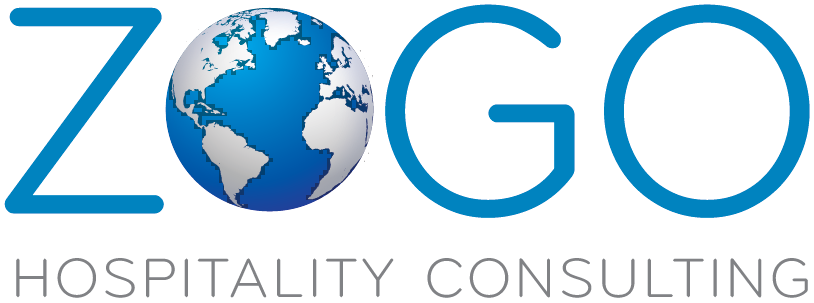We often put Training aside during hard economic times. However, here is a hard truth: You either set a Training Strategy now or start strategizing to cope with upcoming productivity failure. This may come in as inefficient workforce, or rework, non-used talent, or over-development of Training.
We develop and follow finance and commercial strategies for a Hotel or any business to be profitable. We even spend time and energy creating our own personal Strategy for knowledge, health, and personal growth. So why wouldn’t you want to develop a strategy to invest in your people? Whatever weight you want to give to Training in your organization, even if currently “zero,” name it, and choose this intentionally. Review the current Training needs and Strategy to design what Training will look like in the future, and start your steps towards it:
Know What’s On Today
As Consultants, we dig deep into each department’s operations and Training to identify what works well and what does not. Often we discover there are already outstanding workable low-budget Training solutions entirely unknown for the rest of the business. Potentially resulting in the over-production of training material, parallel repetition of similar courses or content in different areas and missed opportunities to share knowledge.
To avoid this, identify departmental initiatives. Talk with the Department Heads to understand what Training tools they are using. Speak to line colleagues on their learning experiences and what was successful Training from their perspective. Finally, select an interested colleague (L&D or Trainer) to summarize and present the latest relevant trends and tools in the industry.
Identify Training Needs
Start Easy: Initiate by looking inwards
What do your current Training Courses address? Is there a clear objective and learning outcome? What delivery method is used for that course, and is it working?
Step it up:
What does your Hotel Staff need? Think of onboarding, basic skills, cross-training, and performance management. Assess Target audience, and what success looks like: what is the expected outcome and impact. Always start defining Learning Needs and Objectives. Once you know that, it will be easier to start looking at the best delivery method to reach those objectives.
Outline the medium-term Strategy
If your Training Budget is currently on hold, you will not be selecting a new technology platform or a Learning Management System today. However, to enable your operational and Human Resources Team’s efficiency in developing talent, you should already be establishing your Strategy for the medium-term future. Start by Identifying what tools will be most conducive to accomplishing your Training objectives. Whether it is e-learning, classroom training, a partnership with external providers, classic one-on-one task training, or a mixture of all. Then, outline the top milestones to get there, regardless of the timeline. This will help define a more straightforward path for your business and utilize talent and resources to work within that path smartly.
Where Productivity Comes In
We are used to looking at productivity from an operational standpoint. We are also used to removing ‘Training’ or development from the entire efficiency measurement equation. However, ongoing Training should be considered part of your Team’s work hours. Remember Talent Development is a investment in the your workforce. Nevertheless, we also want to consider the efficiency to which we utilize resources to get someone ready to perform. For example, in a regular Front Office Agent onboarding at a 150-key Hotel, we could involve:
- The Human Resources (HR) Department: welcome, behavioral rules, and onboarding scheduling
- Learning&Development/ HR: Training Tools, Learning Management Systems, printed guides, Brand onboarding
- Department Head: welcome, introductions, vision, training plans, communication guidelines, and departmental induction
- Junior leader or Mentor: Onboarding Planner, Purpose, Checklists, walkthroughs
- Systems Training (Online/In-person/Third party vendor or Training Manual): Hard skills to perform transactions
- Buddy/Other: Task training, observation, practice, administrational processes, purchasing, reporting, presentation, soft skills to perform transactions
- Simulation Actors: only for newly opening Hotels with trial-runs
Are you truly aware of how many hours do all these persons dedicate to preparing materials and Training delivery? Is there repetition in training efforts across departments? Maybe there is opportunity to streamline resources to train by topic across the Hotel. In fact, careful review may identify areas where resources, talent, time, or work efforts are not effectively utilized.
Engage Junior Leaders:
Once you have defined a Training end-goal and communicated this Strategy to your teams as a ‘goal’ or even ‘wish,’ every team member becomes part of the higher purpose.
Your informed junior leaders will work towards that goal in their smaller on-the-job tasks and team development too. For example:
- A Housekeeping Manager creating a ‘Room Access’ Task Training Step by Step will now know that it may be utilized in the future for an on-line platform for all departments and make it applicable
- A junior manager in Food & Beverage may work with a Front Office Manager in developing Guest communication guidelines for the entire Hotel
- Junior Leaders may share their audience-adapted way of explaining brand values with the HR team, which in turn adapt future classroom training with roleplays
Defining a Training Strategy will get you on the right startline to have more LEAN efforts in Training and increase overall productivity. This means you can avoid; rework across departments, overproduction of self-developed training materials, repetition across onboarding efforts, reprocessing of brand materials to fit similar operations pointlessly, or even unnecessary movement across departments.
Whether you have a plan or not, Training happens organically in every Hotel Area. Therefore, you either have a strategy for it, or each line employee and line manager will feel compelled to create their own. Having a strategy will ensure every team member starts developing the brand message, values, and operational excellence most efficiently and effectively.
